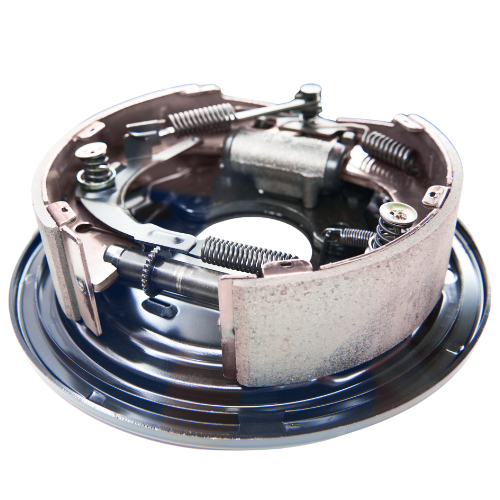Explore the four key components that make up a truck’s brake system—engineered to ensure safe, reliable, and powerful stopping performance on every road.

In the high-stakes world of commercial transport, the decision to compromise on component quality can carry catastrophic financial and human costs. While the immediate savings of purchasing an uncertified, sub-par part such as a cheap slack adjuster or a non-compliant brake chamber that may appear attractive on a balance sheet, the hidden liabilities created by these parts multiply exponentially over the vehicle’s lifespan. The integrity of the commercial vehicle air brakes system is defined by metallurgical consistency and geometric precision; when these foundational qualities are missing, the result is not just premature wear, but a systemic failure that exposes fleets to operational, legal, and reputational hazards.
The initial danger of a sub-par component lies in its invisibility. Unlike external damage, the critical flaw often resides in the material science or dimensional tolerance that is impossible to verify without specialized testing. For safety-critical systems, such as the foundation brakes, these deviations compromise the part’s ability to perform under sustained stress.
How S-Camshaft Defects Cause Failure
The s-camshaft is subject to extreme torsional forces as it translates rotational input from the slack adjuster into outward pressure for the brake shoes. A genuine, certified s-camshaft is crafted from specific alloys and subjected to rigorous heat treatment to achieve maximum surface hardness while maintaining core toughness. A sub-par equivalent often uses inferior steel or skips precise heat-treating protocols.
This metallurgical deficiency manifests as:
When Slack Adjusters Fail to Adjust
The automatic slack adjuster is an intricate mechanical device designed to maintain the optimal running clearance between the brake shoes and the drum. A failure here is insidious:
In a commercial brake system, components function in a perfectly synchronized sequence. A failure in one element, particularly in the foundational actuation parts, initiates a cascading failure that accelerates wear on every linked component.
Accelerated Wear on the Brake Chamber
The brake chamber is designed to operate within a very specific pushrod stroke range. If a slack adjuster fails to maintain correct running clearance, the pushrod must travel further than intended. This over-stroking stresses the internal components of the brake chamber assembly, particularly the diaphragm and the powerful internal spring in a spring brake unit. The resulting fatigue leads to premature diaphragm cracking and air leaks, necessitating unexpected brake chamber replacement long before its scheduled service life. The initial savings on a cheap slack adjuster are immediately dwarfed by the cost of an emergency brake chamber replacement and vehicle recovery.
The Impact on Friction Surfaces
Geometric distortion caused by sub-par components directly impacts friction life. For instance, an s-camshaft that distorts or a slack adjuster that causes over-adjustment leads to:
This principle holds true even in modern disc systems, where non-compliant brake calipers or poor-quality pads can cause rotor warping and compromised stopping distances. Reputable truck brake calipers manufacturers ensure that caliper components provide balanced clamping force to prevent these issues.
The true cost of a sub-par component is realized not in its purchase price, but in the multiplier effect of financial and non-financial liabilities it creates. The expense equation for a fleet manager must account for more than just raw material costs, as poor quality components generate significant downstream costs:
Legal and Reputational Liabilities
When a mechanical failure contributes to an accident, the legal and regulatory repercussions escalate the cost exponentially.
This analysis is relevant whether the component is a high-load part like heavy duty brake calipers or a small but crucial piece of equipment used in maintenance, like a specialized brake line bender ensuring proper air line integrity.
Mitigating the risk of sub-par parts requires fleets to partner with manufacturers who demonstrate process transparency and adherence to global standards. The only reliable safeguard against geometric and metallurgical failure is continuous quality management.
The IATF 16949 certification is the ultimate defense against compromised quality. It represents a commitment to the automotive industry's most stringent quality management system, ensuring that manufacturers of brake calipers, slack adjusters, and brake chambers adhere to:
This level of control is necessary for both drum components and advanced systems, ensuring the reliability of air disc brake calipers and their related actuation mechanisms. The catastrophic liabilities caused by cheap, uncertified parts underscore the necessity of choosing partners whose manufacturing standards eliminate these inherent risks.

With over 20 years of specialized manufacturing experience, GAPASA is an IATF 16949-certified leader dedicated to providing premium-quality truck and trailer brake components. This two-decade history is built upon a foundation of engineering excellence and rigorous process control, ensuring that the components supplied are not merely compliant, but resilient enough to withstand the severe operational demands of heavy-duty commercial transport.
GAPASA utilizes advanced forging, casting, CNC technology, and rubber and plastic molding capabilities to maintain comprehensive control over every phase of production. This dedication to end-to-end quality management ensures the material consistency and geometric precision required for safety-critical components.
GAPASA's specialized product range directly addresses the core needs of foundation brake safety, offering solutions that directly counter the risks of metallurgical failure and geometric inaccuracy:
By maintaining strict quality standards and certification, GAPASA provides the engineered dependability that fleets require to convert unpredictable operational risks into predictable maintenance cycles, effectively eliminating the exponential costs associated with component compromise.
The true cost of a brake component is measured by the risk it removes, not the price tag it carries. In commercial transport, the integrity of parts like the s-camshaft and slack adjusters directly impacts the bottom line through maintenance cycles, regulatory compliance, and ultimate liability exposure. By prioritizing certified quality from truck brake calipers manufacturers who adhere to standards like IATF 16949, fleet operators convert a potential financial crisis into a reliable, predictable operational expense. This commitment to superior component quality is the only sustainable strategy for mitigating exponential liability in the heavy-duty sector.